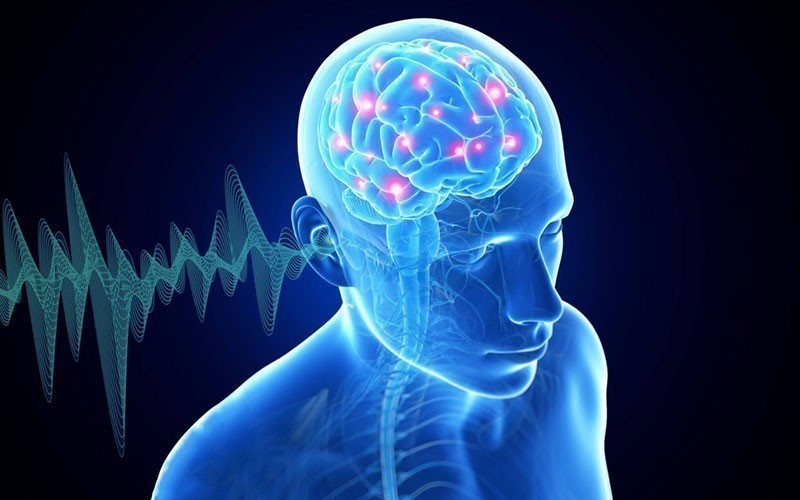A large number of clients I have worked with so far have suffered from anxiety and my personal experience – as well as statistics – indicate that there is an increasing number of those who are interfered by anxiety at work and in everyday life, and that number is constantly growing.
What is anxiety?
Anxiety is an incessant emotional state of expectation that something bad will happen. It is characterized by an uncomfortable, panic fear, insecurity, internal anxiety and concern. Anxiety can become a serious problem if the symptoms become more frequent, long lasting and very pronounced, and then interfere with daily activities. The acute form of anxiety disorder is a panic attack – a sudden, intense panic, fear, and horrify attack accompanied by rapid and shallow breathing, sweating, dizziness, and the feeling of nearing death.
A milder form of anxiety is the feeling of fear that occurs in certain situations that require leaving the zone of confrontation – moving, employment, going to an exam, and most people at least have experienced a milder form of anxiety. Normal anxiety is unpleasant but short-termed. It can also be incentive and motivate a person to do more and better. This type of anxiety occurs occasionally and does not affect the quality of everyday life.
There are different types of anxiety disorders:
– Phobias – Extreme fear of certain situations, objects or activities.
– Social anxiety – an extremely strong fear of judging others in social interaction with people.
– Obsessive compulsive disorder – recurrent irrational thoughts that indicate specific repetitive behavior.
– Anxiety disorder due to separation – a strong fear of separation from home or loved ones.
– Hypochondria – an overly anxious concern for your own health.
– Post-traumatic disorder – anxiety that arises after stressful and traumatic events.
Symptoms of anxiety
General symptoms of anxiety are:
- Fear, discomfort and panic;
- Fear of uncertainty, fear of losing control over yourself;
- Sleep problems, insomnia;
- Unreasonable anxiety;
- A headache;
- Cold, swollen hands or feet;
- Lack of breath, shallow breathing;
- Palpitations;
- Pulsing in the ears;
- Muscle tension;
- Tension and stiffness of the neck;
- Itching or burning sensations on the skin;
- Chronic fatigue;
- Inability to relax and rest;
- Weakness and swelling of the legs;
- Nausea …
Symptoms are many – the top ones listed are only the most common. There are many different classifications of symptoms, and one good part includes physical symptoms where it is literally presented as anxiety is “depicted” on a particular organ or organ system (for example, stomach ulcer, irritable column, etc.)
Causes of anxiety
The exact cause of anxiety and panic attacks is generally unknown, or not so obvious that it could easily be recognized. External causes can be traumatic events or consumption or withdrawal from certain substances (drugs, alcohol, etc.). In these cases, the factor of the susceptibility of the person to develop anxiety is crucial.
More frequent causes of anxiety disorders are internal factors. It can be said that the inability to recognize and experience the emotions and emotional charges that a person carries, a key cause in a large number of anxiety people. Some people who suffer from anxiety disorder can recognize this “emotional charge” and see the cause of the occurrence, but they are not able to get rid of it.
Anxiety is, within some people, the phase of an unrecognized internal maturation crisis that forces a person to change, release, relieve, or reverse the way in which they live, work, and feel. This unrecognized crisis completely overwhelms the person and it rules. Fears and worries become dominant in thought and hardly anything else from a person’s life can, by intensity and importance, exceed anxiety because it is very real and alive for the person who is fighting it.
Subconscious mind and anxiety
The subconscious mind has a great influence on our life, behavior, decisions and choices we make. In the process of personal evolution that takes place more through the crisis than through arbitrary choice, anxiety can be explained as a state created by the stagnation in the unreal “space” between subconscious disturbing influences and the existing inadequate and unsatisfactory situation in which a person is. Anxiety always warns that a person has crossed his own border and that there is no longer room for suppression and neglect of one’s own feelings and real inner needs. It is the time in which the solution is in accepting and awareness of the subconscious before fighting and denying everything that distances the person from the feeling of satisfaction and fulfillment.
Observed through the symptoms through which anxiety manifests itself, it is a recurring crisis that needs to produce an evolutionary step in a person’s life. However, people who suffer from anxiety are not able to objectively perceive their own situation, and even less their own perception and reaction to external irritations of any kind, or emotions that overwhelm it.
Anxious person has a specific perception of events, situations, relationships and reacts with an instinctive “fight-or-flight” mechanism. For an anxious person, an irrational and oversized danger, mistrust and expectation of something bad comes from everything. The problem is that an anxious person remains stuck in this instinctive reaction to an unpleasant event or stressful stimulation and continues to function in mental tension and physical cramps.
Some people are aware of these tensions while others are not aware at all that their body is in the grip and that they are constantly fighting for survival. Unknowingly, anxiety was appropriated as a defensive mechanism in childhood. Hyperactive children have already acquired anxiety as a defensive and protective mechanism, and when they grow up, it is very difficult for them to understand at all how they live without the internal anxiety with which they have been brought to life and have spent their whole lives.
Over time, the anxiety armor becomes too heavy and the person becomes chronically tired, indifferent and blunt – he feels stagnant, rotates in a circle, and “extinguishes”, although in some cases, it can be offset by the effort to work and function normally.
Occasional panic attacks occur when a strong feeling attempts to appear and be blocked because the body has lost the ability to let go and experience feelings and therefore one starts to suffocate. A panic attack is then a struggle with oneself, that is, the struggle of the natural need to feel the feelings with the anxiety mechanism that the person created himself. Unfortunately, a person can not understand this panic crisis as an opportunity for breakthrough and liberation, but it is always perceived as a death threat.
What is common for all anxiety disorders
Although the manifestation of anxiety within many people is similar, the causes are very different, but several of the following characteristics are inherent to everyone, which are fear, struggle and discomfort.
Most anxious people are ready to fight anxiousness. In most cases, the result is absent because the first step is skipping into the fight, which is – the acceptance of the weakness that has remained masked by the onset of an anxiety disorder. Weakness always pushes fear into the foreground attempting to stay hidden for longer and just extends the agony that a person has created. It sounds paradoxical, but all of our weaknesses are essentially very strong and deeply rooted and thus trigger a strong fear that protects them from manifestation. They act as strong charges and affect the person by adopting them and perceiving them as part of their nature, their character and identity.
If we skip the first step in this crisis, the weakness will remain unconscious and will become even stronger every day. By recognizing, understanding and accepting weaknesses, its charge changes its nature and thus integrated into the personality of a person, it takes on a new higher quality essence and the person is free from the weakness, recognizing and perceiving this process as a transformation and as a new “birth”.
Body problems as a cause of anxiety
Scientific research published over the past five years has shown that anxiety can be caused at the physical level that connects with leaky guts and microbiome. If there is a long-term disorder of the intestinal flora, this can lead to a serious lack of nutritional and exhaustion of the organism. It is particularly important to check the levels of vitamins D3, B6, B12, K2 and Zinc because the lack of these elements can cause anxiety.
Anxiety is usually treated with medication with psychotherapy today. The results of such an approach to treatment are different and success depends on what caused anxiety.
How Theta healing solves the problem of anxiety
Working with clients who have anxiety and panic attacks and using Theta healing – I have concluded that it is necessary to include several elements in the process of work in order to permanently “liberate” a person of anxiety and panic attacks. I say liberate because of the fact that an anxious person is really trapped. Mentally tense and disturbed, emotionally blocked, energy-shielded and physically rigid. In order to remove the armor, I use a four-step process in working with clients:
The first is finding the cause of tension on a mental level. For this I use the process of researching the client’s life line in order to find the key point in which the form of anxiety emerged and later only developed. These may be various unpleasant or traumatic situations in early childhood that have remained unresolved and deeply suppressed. Often they are parents’ quarrels and the close relationship between the family and the child, while the traumatic experiences in school and puberty crisis of maturation have further strengthened the mechanism that the child unconsciously built up.
The next step is to discover the emotional background and content of key points in the emergence of anxiety, that is, to raise the long feelings of which the person was not aware of at all or compensated them. In this process it is important to consider the “emotional network” – the suppressed and compensated emotions.
Special breathing exercises break down energy armor, relieve the energy charge that has been manifested through anxiety and thus make space for connecting the mental, emotional energy and physical aspect of a person. Then the person begins to feel himself again and to recognize his feelings as they really are by letting them physically live.
For the physical “revival” of anxiety, I use movements that need to be adapted to the person and at the same time related to the mental, emotional and energy aspects of a person, in that way a permanent release from anxiety is achieved.
It is very important that the client understands his process of releasing from anxiety because through it he experiences transformation and maturation that gives a new quality to life and relationships with family, friends and colleagues. And most importantly, he finally learns himself to live without anxiety and tension revealing and accepting his true nature.

![anksioznost-simptomi-lecenje[1]](https://pogledi.net/wp-content/uploads/2018/11/anksioznost-simptomi-lecenje1.jpg)

